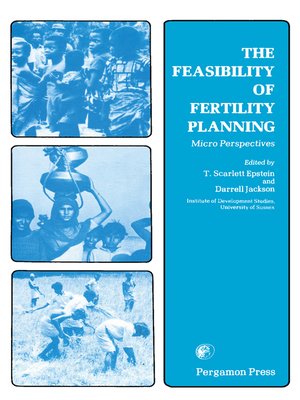
Sign up to save your library
With an OverDrive account, you can save your favorite libraries for at-a-glance information about availability. Find out more about OverDrive accounts.
Find this title in Libby, the library reading app by OverDrive.



Search for a digital library with this title
Title found at these libraries:
| Library Name | Distance |
|---|---|
| Loading... |
The Feasibility of Fertility Planning: Micro Perspectives is a collection of papers presented during a conference held at the Institute of Development Studies in December 1975.
Part 1 gives an introduction to the paradigms and perspectives of population growth and rural poverty in Third World countries. This section discusses the need for a cross-cultural approach in coming up with recommendations that will vary in different social, economic, or political environments. Part 2 discusses culture and fertility, particularly the relationship between economic and demographic changes. A case study regarding the impact of the inter-relationships of economic, social, and political factors in the demographic processes in a Nigerian village is presented. Part 3 examines development and fertility including intra-rural migration. This section notes that the decline of the fertility rate in Sri Lanka is not related to the country's economic development, unlike in other countries such as Japan, Taiwan, and Singapore. Part 4 addresses planning and fertility to disaggregate the available macro-demographic data and analyze the rationale of the different fertility practices followed by various sections of the population. The paper emphasizes that the communities' social and self-interests should be taken into account, along with demographic factors, to improve their members' welfare.
Sociologists, administrators and chiefs of social welfare organizations, heads of health services, local and government officials, and volunteer health organizations will find this book highly valuable.







